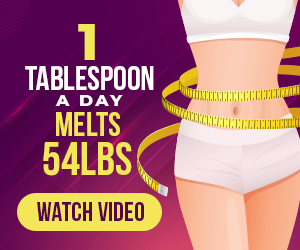Monocled CobraNaja kaouthia |

Custom Search
|
|
The monocled cobra (Naja kaouthia) is a highly venomous snake species native to South Asia and Southeast Asia. These dangerous and potentially deadly snakes can be found in China, India, Vietnam, Nepal, and Cambodia, but also Malaysia, Bangladesh, Bhutan, Laos, Myanmar, and Thailand.
The monocled cobra is an adaptable snake species capable of living in a wide variety of habitats, from natural to human-modified environments, at elevations of up to 3,300 ft (1,000 m) above sea level. The species prefers habitats associated with water, such as swamps, mangroves and paddy fields, but these snakes can also be found in forests, grasslands, and shrublands. Monocled cobras are found in agricultural lands and also human settlements, including cities. The species was formerly regarded as a subspecies of the Indian cobra also known as the Spectacled Cobra (Naja naja). The species is also commonly referred to as the Monocellate cobra or Thai cobra and belongs to the family Elapidae. The monocled Cobra is mainly a crepuscular or nocturnal terrestrial snake species, but it shows some climbing ability if needed. Normally they hide in holes, mounds, caves, piles, cracks or under fallen wooden logs among other places.
The monocled cobra gets it common name from the O-shaped, or monocellate hood pattern present on the rear of its hood. It's distinct to that of the Indian cobra or spectacled cobra which has a "spectacle" pattern, formed by the two circular ocelli connected by a curved line.
Monocled cobras are medium-sized and heavy-bodied snakes with elongated cervical ribs that expand to form the typical hood when they feel threatened. Usually, these cobras prefer to flee, but if threatened they will raise their body, spread their hood and hiss loudly, and will eventually strike and bite to defend themselves. Most adult monocled cobras average between 3 ft (1 m) and 5 ft (1.5 m) in length but they are known to grow up to 7.5 ft (2.3 m). Their color pattern is highly variable among individuals, and it also varies geographically. Their head is elliptical in shape and slightly distinct from the neck with medium sized eyes with round pupils, a short rounded snout with large nostrils. Due to their somewhat similar appearance and size they are sometimes mistaken with the Chinese cobra (Naja atra). Venom / Bite
Their highly toxic venom is considered one of the fastest acting snake venom in the world and can cause death in just an hour after envenomation. Contrary to the Indian Cobra (N. naja) monocled cobras can deliver a bite in the very first attack making it even more dangerous. Their bite causes localized swelling at the bite area but also the progressive paralysis of the nervous system which may lead respiratory paralysis and death due to asphyxia. The monocled cobra bite may also lead to tissue necrosis requiring surgical intervention. They have a pair of fixed anterior fangs, that may reach more than 6 mm, and are somewhat adapted for spitting. These snakes cause more human fatalities than any other snake in Thailand. Diet / Feeding Adult monocled cobras will feed on variety of prey including small mammals such as rodents, frogs, lizards, toads, fish, even birds, and eggs. They also kill and eat other snakes including venomous ones. Juveniles eat mostly amphibians. Reproduction The monocled cobra is an oviparous species, females lay eggs. The mating season takes place after the rainy season. The female lays between 16 and 33 eggs per clutch between January to March in dry mounds, caves or holes, and usually stays with the eggs. After an incubation period of around 2 months, they hatch between April to June.The hatchlings measure between 8 to 12 inches at birth and are every bit as deadly as an adult snake. Conservation / Threats The monocled cobra is considered as a Least Concern species by IUCN, mainly due to the snake's reported abundance, large distribution, and adaptability to many habitats including those altered by humans. Monocled cobra is also listed on CITES Appendix II. But they do suffer the usual threats to venomous snakes including killing by humans due to fear of its venom and supposed aggressive behavior and also road kills. The monocled cobra snake is also extensively used by East Indian snake charmers. There are no major threats reported for the species, and their population probably isn't declining significantly, and in some places, their distribution coincides with protected areas. Although the monocled cobra is harvested from the wild for the skin trade, food snake wine, and medicinal purposes, this is done in small numbers, which aren't likely to be causing a significant impact on their population numbers in most of its range. Even though China forms only a small part of the species range, where they have declined by over 30% in the last 10 years due to over harvesting.
|
Scientific classification |
© 2014 Snake Facts About Us | Privacy Policy | Contact








